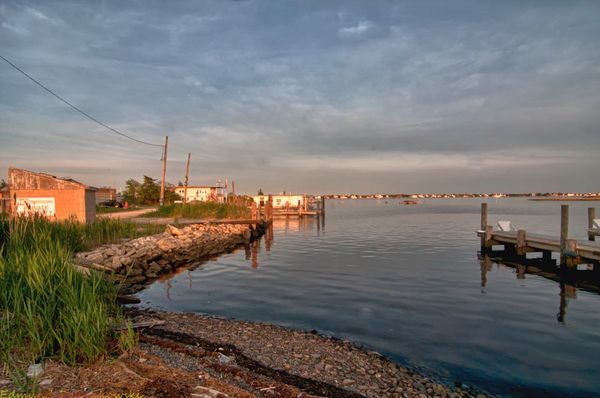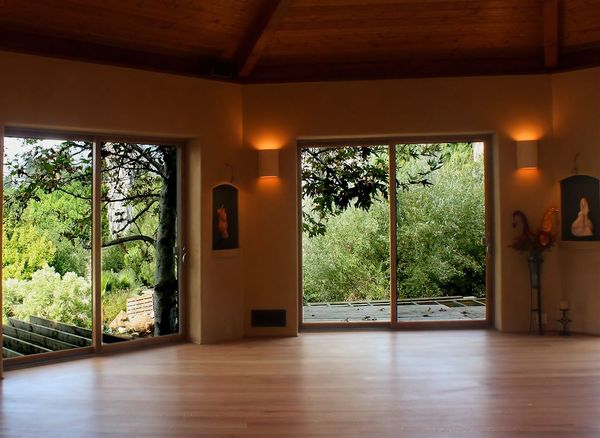Which HDR program & why?
May 30, 2012 05:38:28 #
Starting to do more HDR...curious as to which HDR software you use & why. I'm using Photomatix Pro 4.1...having mixed results. What I mean is although I seem to be able to get the 'far out' there results, I'm also using it for real estate shots, primarily inside to get the full range, issue is I just can't seem to get 'normal' looking images, meaning images that look like real life photographs....perhaps I'm just not doing it correctly.
Any thoughts or suggestions?
Jeff
Any thoughts or suggestions?
Jeff
May 30, 2012 09:29:11 #
I use Photomatix but that's strictly a personal choice. I've seen others use NIK HDR and even CS5 and do stunning jobs.
Probably the best book out there is "The HDR Book" by RC Concepcion. He explains that the difference between hdr and great hdr is in the post processing and teaches you how to do it.
Probably the best book out there is "The HDR Book" by RC Concepcion. He explains that the difference between hdr and great hdr is in the post processing and teaches you how to do it.
May 30, 2012 09:45:12 #
docrob
Loc: Durango, Colorado
jwegge11 wrote:
Starting to do more HDR...curious as to which HDR software you use & why. I'm using Photomatix Pro 4.1...having mixed results. What I mean is although I seem to be able to get the 'far out' there results, I'm also using it for real estate shots, primarily inside to get the full range, issue is I just can't seem to get 'normal' looking images, meaning images that look like real life photographs....perhaps I'm just not doing it correctly.
Any thoughts or suggestions?
Jeff
Any thoughts or suggestions?
Jeff
probably - and when you shoot inside you could probably change the way you do that too - you know - you gotta learn to see it before you can create it.
May 30, 2012 11:11:30 #
jwegge11 wrote:
Starting to do more HDR...curious as to which HDR software you use & why. I'm using Photomatix Pro 4.1...having mixed results. What I mean is although I seem to be able to get the 'far out' there results, I'm also using it for real estate shots, primarily inside to get the full range, issue is I just can't seem to get 'normal' looking images, meaning images that look like real life photographs....perhaps I'm just not doing it correctly.
Any thoughts or suggestions?
Jeff
Any thoughts or suggestions?
Jeff
I suspect your mixed results may be part of getting to know the software and how you are bracketing your shots. Photomatix has good reputation.
I like NIK and it works quite well. I also like the way it and other NIK products integrate so well with Lightroom and CS5.
May 30, 2012 11:18:25 #
The program that I've used which produced the closest result to a traditional photograph is found in Photoshop.
I work directly from Camera RAW, export without doing any edits to Merge to HDR, convert to 16 bit, Tonemap and then use "Save", not "Save As". This places the tonemapped image back into the original folder and you can begin to edit as you would a RAW file.
I work directly from Camera RAW, export without doing any edits to Merge to HDR, convert to 16 bit, Tonemap and then use "Save", not "Save As". This places the tonemapped image back into the original folder and you can begin to edit as you would a RAW file.
May 30, 2012 11:24:16 #
Ziggy-- forgive my ignorance but how does a 16 bit format differ from I assume the original 32 bit? In other words, what does it do to the photo to make the final result different?
May 30, 2012 15:09:17 #
The conversion from 32 bit to 16 bit compresses the dynamic range to render a more natural looking photo. You can first do whatever Photoshop allows in the 32 bit mode and then go to 16 bit if you want.
As to the things that the program actually does, it's way above my paygrade. To be very honest, I only care about the result; and I get a natural looking image this way.
As an aside to the current method I use, the new Lightroom upgrade, released this morning, now offers the ability to edit 32 bit TIFF images. This could really be a big help.
As to the things that the program actually does, it's way above my paygrade. To be very honest, I only care about the result; and I get a natural looking image this way.
As an aside to the current method I use, the new Lightroom upgrade, released this morning, now offers the ability to edit 32 bit TIFF images. This could really be a big help.
May 31, 2012 07:22:30 #
As suggested, watch your White Salance on interior shots.
incandesect ((Sp?)
incandesect ((Sp?)
May 31, 2012 07:48:00 #
I use both Photomatix 4 and NIK HDR Efex Pro dependinng on the the desired results... I like Photomatics if I want a more "Painterly" look. Lately though I find that I produce a more natural Faux HDR using only one RAW image and NIK Vivesa. Using multiple controle point I brig up both highlight and shadow areas, adjusting brightness, contrast,saturation, structure etc to create an image with increased dynamic range. If you take a "natural" looking HDR image done with either Photomatixor NIK HDRPro and compare my Vivesa image, you cannot tell the difference.

May 31, 2012 11:44:01 #
May 31, 2012 13:47:40 #
jwegge11 wrote:
Starting to do more HDR...curious as to which HDR software you use & why. I'm using Photomatix Pro 4.1...having mixed results. What I mean is although I seem to be able to get the 'far out' there results, I'm also using it for real estate shots, primarily inside to get the full range, issue is I just can't seem to get 'normal' looking images, meaning images that look like real life photographs....perhaps I'm just not doing it correctly.
Any thoughts or suggestions?
Jeff
Any thoughts or suggestions?
Jeff
Jeff,
My personal choice is Corel's Pant Shop Pro X4 for HDR Processing, there are many very fine HDR processing applications available, the choice is yours to make.
After you have selected the overall best application for your type of work, and workflow, you will need to study the "Bracketed Exposure" methods you use for the original exposures.
You mentioned using HDR for interior room images, this requires that you select the most important element in the room to expose correctly. The far wall with a white brick fireplace? Not if you have a bay window to the right with bright sunlight illuminating the outside yard.
If you set your exposure compensation for bracketed exposures to 1.5 stops you will have a full range of exposures for the interior and exterior of the room. (You will avoid the bright burnout of the window.)
Once you have Exposure Compensation figured out you can do most anything with HDR Processing. If you have a hand held light meter you can calculate the full range of exposure settings to capture a good overall image capture, but you must use bracketed exposures and blend them with HDR Processing. If you do not have a hand held meter set your camera to Av (Aperture Value) and watch the shutter speed change as you pan over the scene.
Michael G

May 31, 2012 14:56:54 #
May 31, 2012 15:25:04 #
Armadillo wrote:
quote=jwegge11 Starting to do more HDR...curious ... (show quote)
Michael; You are using Corel's Paint Shop Pro X4 for HDR Processing.
How many photos do you have to take for HDR processing in Paint Shop Pro x4? I may buy it.
Thanks,
Julio
May 31, 2012 16:11:06 #
Michael (and others)--
Thanks for all of your inputs. I have a Canon 5DMkII and on Exp Bracketing it does only 3--- So what I did was determine the Aperature I would like to use, then switch to Manual Mode--- I then find an approx exposure that fills up a good bit of the Histogram, with perhaps a slight exposure to the right. Then I go down approx 4 shutter speeds and shoot about 8 bracketed Shutter speeds t to going up--so my first exposure I see when I go to edit is my lightest exposure (longest shutter speed) well actuall the first I see is my hand because before i shoot a 'Series' I put my hand in front as just makes it easier when I get to the editing....
Does that sound like a good strategy? Too many exposure brackets? Am I getting a good average with this set?
Jeff
Thanks for all of your inputs. I have a Canon 5DMkII and on Exp Bracketing it does only 3--- So what I did was determine the Aperature I would like to use, then switch to Manual Mode--- I then find an approx exposure that fills up a good bit of the Histogram, with perhaps a slight exposure to the right. Then I go down approx 4 shutter speeds and shoot about 8 bracketed Shutter speeds t to going up--so my first exposure I see when I go to edit is my lightest exposure (longest shutter speed) well actuall the first I see is my hand because before i shoot a 'Series' I put my hand in front as just makes it easier when I get to the editing....
Does that sound like a good strategy? Too many exposure brackets? Am I getting a good average with this set?
Jeff
May 31, 2012 17:09:43 #
jlrivera wrote:
quote=Armadillo quote=jwegge11 Starting to do mo... (show quote)
Yes, I do use PSP X4 it has a seperate module for importing bracketed exposure image files, will align each image from selective references in the images, and allow instant editing for brightness, contrast, tone mapping and chroma, and n=merge the images into one final file usable for more intense editing in the Editor module.
I normally take 3 bracketed images with my Canon 500D camera. I haven't found a way to automatically take 5 - 7 exposures without turning off all automatics and making 5 - 7 manual exposures.
What I have found (remembered from the older film days) is if I take an exposure meter reading over the whole scene, record the shutter speed for each extreme element, and average all the various readings I can come up with an exposure compensation value of somewhere around 0, +1.5, and -1.5. Importing these exposures into HDR then gives me the required adjustments to allow the final image to look more like what my eye/brain thought it saw at the moment of capture.
Figuring out the compensation values is mostly by trial and error, but using your built in meter on Aperture Value(Priority) will go a long way in shortening the learning curve for Exposure Compensation.
Michael G
If you want to reply, then register here. Registration is free and your account is created instantly, so you can post right away.







